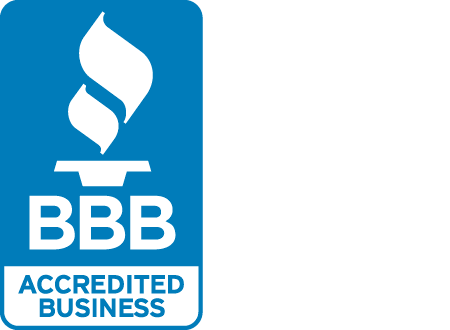Knob And Tube Wiring
What Is Knob And Tube Wiring?
The safety and efficiency of a home's electrical system are cornerstones of modern living, yet many homeowners may be unaware that they're relying on an outdated and potentially hazardous setup: knob and tube wiring. Installed primarily in homes built before the 1950s, this form of electrical wiring has not only outlived its effectiveness but also poses significant risks that are often underestimated or overlooked. This brings us to the vital need for its replacement.
Knob and tube wiring comprises a series of ceramic knobs that hold insulated copper wires and ceramic tubes through which these wires pass. Initially considered an effective method of electrical wiring, it was widely employed in residential, commercial, and industrial buildings alike. However, with the advancements in electrical engineering and a better understanding of electrical safety, it's clear that this system is not up to modern standards.
The Risks—From Fire to Functionality
Knob and tube wiring conspicuously lacks a grounding conductor. Modern electrical systems use grounding as a safety measure to minimize the risk of electrical shock and fire. In knob and tube systems, the absence of grounding makes them vulnerable to overheating and, consequently, electrical fires. Various studies and fire incident reports consistently spotlight this system as a significant fire risk. Insulation around these old wires can deteriorate over time, compounding the fire risk. When you consider the age of the wiring and the likelihood of worn-out insulation, it becomes a hazard that should not be ignored.
Another significant drawback is its inability to handle the electrical demands of modern life. Designed for an era where households had minimal electrical appliances, this wiring system is easily overwhelmed by today's electrical loads. Overloading can lead to overheating, further contributing to the risk of fire.
Financial consequences also loom large. Many insurance companies are increasingly reluctant to cover homes with knob and tube wiring due to the heightened risk factors. Even if coverage is provided, it often comes at a higher premium. This type of wiring can also be a significant drawback during property resale, significantly reducing market value and buyer interest.
Navigating the regulatory landscape is another pivotal aspect. The National Electrical Code (NEC), which serves as a standard for electrical installations, has designated codes pertaining to knob and tube wiring. These regulations often require that the replacement is performed or supervised by a licensed electrician, ensuring adherence to modern safety standards. Local building codes might impose additional stipulations and require specific permits, making compliance a multi-layered endeavor.
This wiring system uniquely uses air as an insulator, a contrast to modern wrapped wire insulation.
The Replacement Process
Replacing this wiring is not a feasible DIY project and starts with a thorough inspection by a licensed electrician. The objective is to assess the condition of the existing setup and identify which circuits require immediate replacement. This phase sets the stage for developing a comprehensive plan for systematic replacement. Before beginning the replacement process, acquiring the necessary permits is crucial. These permits serve as an official endorsement that the work to be done meets local and national standards.
Safety protocols are rigorously adhered to during the replacement process. Electricians use Personal Protective Equipment (PPE), and multiple checkpoints are built into the procedure to mitigate electrical hazards. While the timeframe for replacing knob and tube wiring can vary significantly based on the home's size and the complexity of the wiring network, a standard schedule often falls within a week to two weeks for an average-sized home.
After installation, robust testing and quality assurance checks are mandatory. These measures, often regulated by local codes and the NEC, confirm that the new system not only replaces the old but elevates the safety and efficiency levels to modern standards.
Replacement Benefits
The advantages of taking this critical step are multi-fold. You are fundamentally enhancing the safety profile of your home by minimizing fire risks. Moreover, newer systems are designed to be energy-efficient and are better suited to handle the electrical loads of modern household appliances. These improvements often translate into an increase in property value, making it a worthwhile investment.
If your home still relies on knob and tube wiring, replacing it is not merely an option but an imperative. The safety risks, coupled with functional limitations and financial drawbacks, make a compelling case for immediate action. Compliance with updated regulations ensures that your home's electrical system is not just current but also built to meet future demands, embodying both safety and efficiency.
Contact us today for a consultation.
Knob and tube components are now collectors' items, valued for their historical and aesthetic appeal.
Frequently Asked Knob And Tube Wiring Questions
Q1. How does this system effect my home's energy efficiency, and what improvements can I expect after its replacement?
A1: Knob and tube wiring is less energy-efficient compared to modern wiring systems due to its inherent design limitations, such as the lack of grounding and insulation suited for higher electrical loads. These inefficiencies can lead to power losses, driving up your electricity bills over time. After replacing knob and tube wiring with a modern system, you can expect improved energy efficiency, which often translates into cost savings on utility bills. The modern wiring systems are designed to handle a variety of energy-efficient appliances, further enhancing the overall efficiency.
Q2: Are there any special considerations for homes with historical or architectural significance?
A2: Homes with historical or architectural value often pose unique challenges for electrical upgrades, as it's essential to preserve their structural and aesthetic integrity. Specialized techniques and materials may be required to maintain the original features of the home. Consultation with experts in historical preservation, along with a licensed electrician, can help navigate these complexities while ensuring that the updated electrical system meets current safety standards.
Q3. Can partial replacement of knob and tube wiring be a viable alternative to full replacement, and what are the associated risks?
A3: Partial replacement of knob and tube wiring is sometimes considered as a cost-saving measure or as a temporary fix. However, it poses considerable risks, such as the potential for incorrect integration between old and new wiring systems, leading to increased fire hazards. Additionally, partial replacement is generally not compliant with National Electrical Code (NEC) guidelines or local building codes, making it a less advisable route both from safety and regulatory standpoints.
All Rights Reserved | Lehmann Electrical + Design


